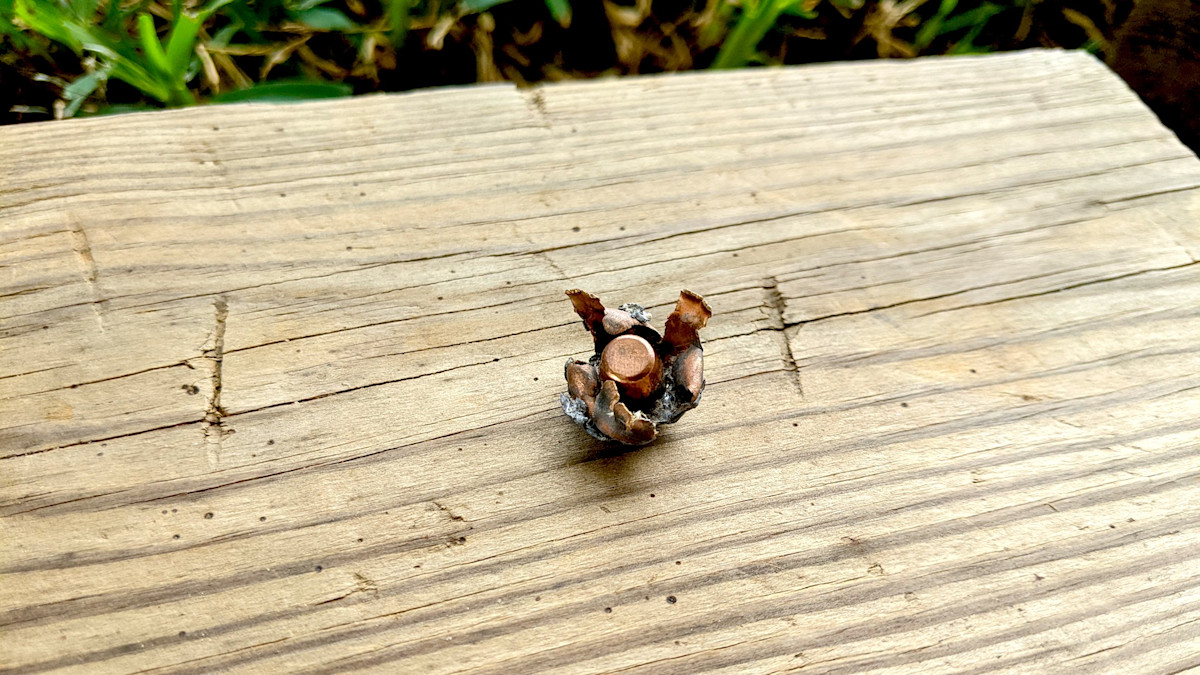
As my knife stroke peeled the deer’s hide from the rib cage, something hard fell out and bounced off my boot. I surveyed the pine needles and noticed a coppery glimmer. I reached for the bullet and studied the perfectly curled petals that had toppled the whitetail.
Most hunting bullets are designed to smoosh into a mushroom when they collide with an animal. Those expanded projectiles don’t simply cut through tissue—they plow and tear, maximizing lethality. But I seldom recover bullets. They usually punch through or disappear into a sinewy abyss. Without the spent bullet in hand, it’s tough knowing how well it expanded or if it shattered to pieces mid-way through the quarry. Skin is elastic, so entry and exit holes are unreliable indicators.
That’s why many hunters shoot into ballistic gelatins that mimic flesh. Unfortunately, pre-made gels cost nearly twice as much as a box of ammunition, so testing expansion can quickly siphon away your shooting budget.
My friend Chris Parish showed me an inexpensive way to measure expansion by building a water trap. Although his method doesn’t yield penetration data with the accuracy of a ballistics gel, its simple design makes expansion testing straightforward. Basically, Parish set a rain barrel on its side, packed it with water jugs, and fired a bullet at the contraption. When we peeked into the water between the obliterated jugs, we found a bullet as perfectly mushroomed as the one that bounced off my boot.

Building a Water Trap
Hardware stores carry most of the materials you’ll need:
- Rain barrel (50-gal or bigger)
- Folding table
- Ratchet strap
- Cutting board
- Wheel chocks
- 6 to 8 (1 gal) water jugs (empty milk jugs are ideal)
- Garden sprayer
Rain barrels with smooth sides are best, otherwise debris collects along the inner grooves. Use a grinder or jigsaw to cut an opening for incoming bullets at the head of the barrel. At the tail end, slice out a fist-sized hole on an edge for pouring out water. With the barrel ready, strap it sideways to a folding table.
You’ll need a platform to elevate and center the water jugs inside the rain barrel. I prefer a four-foot-long plastic cutting board that rests atop plastic wheel chocks. Plywood and other lumber will work, but wood eventually swells with water and cracks. It won’t keep the barrel as clean as plastic, either.
For the water jugs, you can save empty milk containers, buy water at the grocery store, or raid your local recycling facility (ask first!). Six jugs will stop most bullets. But if you’re shooting a cannon like a .300 Win Mag, you’d better stuff the barrel with an extra jug or two, especially if you’re launching a high-weight retention bullet, such as the Sig Sauer Elite Copper Hunting bullet.
Expansion Testing
After you’ve packed your rain barrel with water jugs, study the setup through your riflescope. Are the jugs lined up, or are they crooked? Are they level or tilted? It’s worth fixing these issues beforehand lest your bullet glances off a jug and blasts a hole through your new rain barrel. I always set a portable target beside the water trap so I can check the bullet’s point of impact first.
After a good hit, you will usually find your bullet in the puddle of water at the bottom of the barrel. Occasionally, a bullet bounces out the front and you can pick it off the ground. If you’re interested in collecting bullet fragments, first slowly pour the water out the bottom hole. Then, hold a paper coffee filter below the hole as you wash out the particles with a garden sprayer.

Measuring Expansion
Bullets seldom expand with the exquisite roundness of a portobello. To account for asymmetry, I measure the widest diameter with calipers, then turn the bullet 90° and measure again. You can take that average and divide it by the bullet’s unfired diameter or follow this equation:
Expansion ratio = average of expanded measurements / original bullet diameter
As an example, let’s take the bullet I recovered from the whitetail. It’s original diameter is 0.277 inches (.270 Win) and the two expanded measurements are 0.511 inches and 0.517 inches (average 0.514 inches). To solve for the expansion ratio, 0.514/.0.277=1.86.
An expansion ratio of 1.86 means the bullet nearly doubled its diameter. Not bad.
Not only can you compare different bullets with a water trap, but you can also see how velocity affects expansion. One method is to back up and shoot from increasing distances. Another strategy is to adjust your powder loads to incrementally decrease bullet velocities. Either way, bullets require serious speed to fully expand, so you’ll likely see mushrooms becoming more slender at tamer velocities. And as you scoop different bullets from the water trap, you’ll soon discover which projectiles deserve a place in your hunting rifle.





Conversation